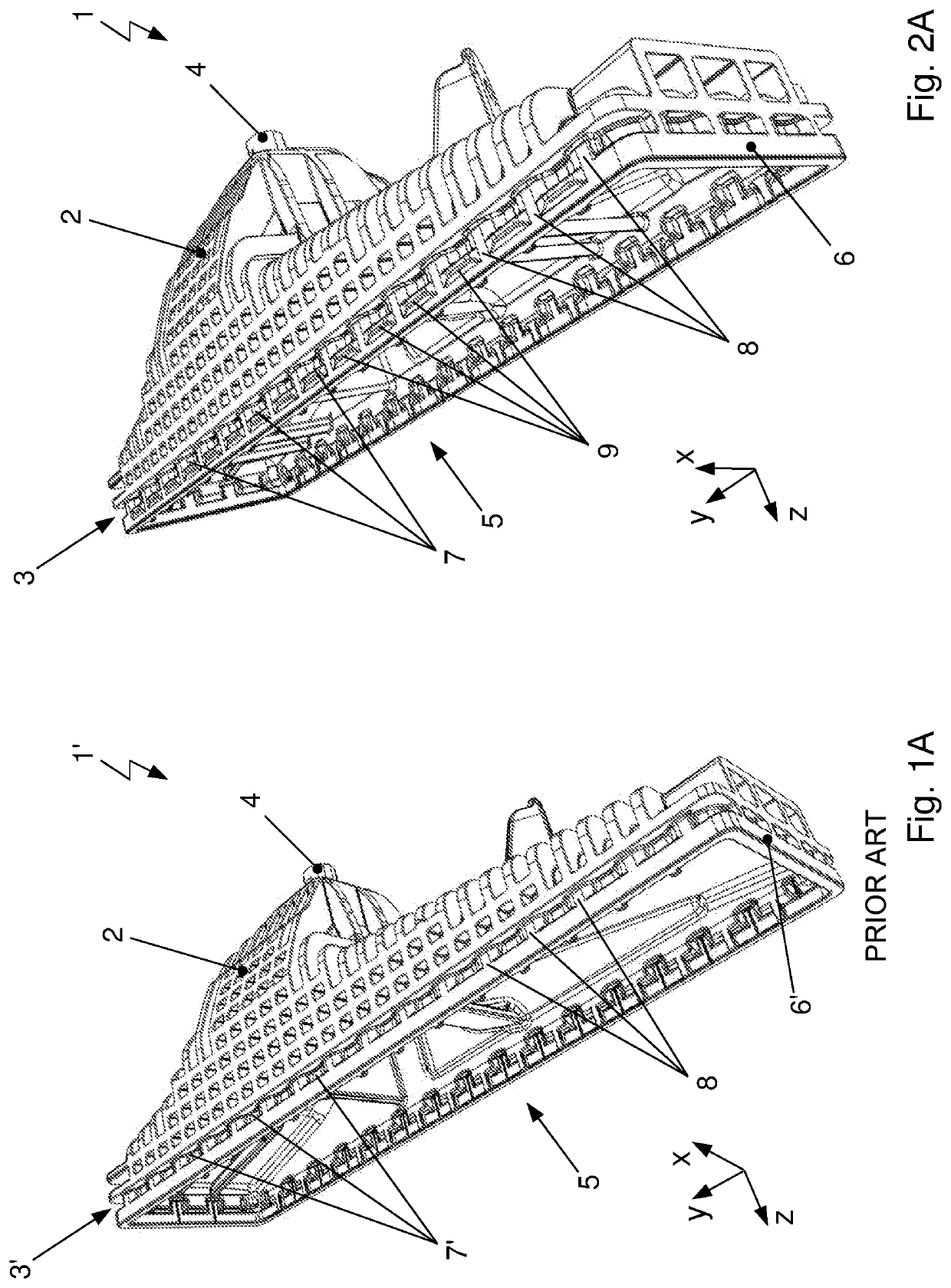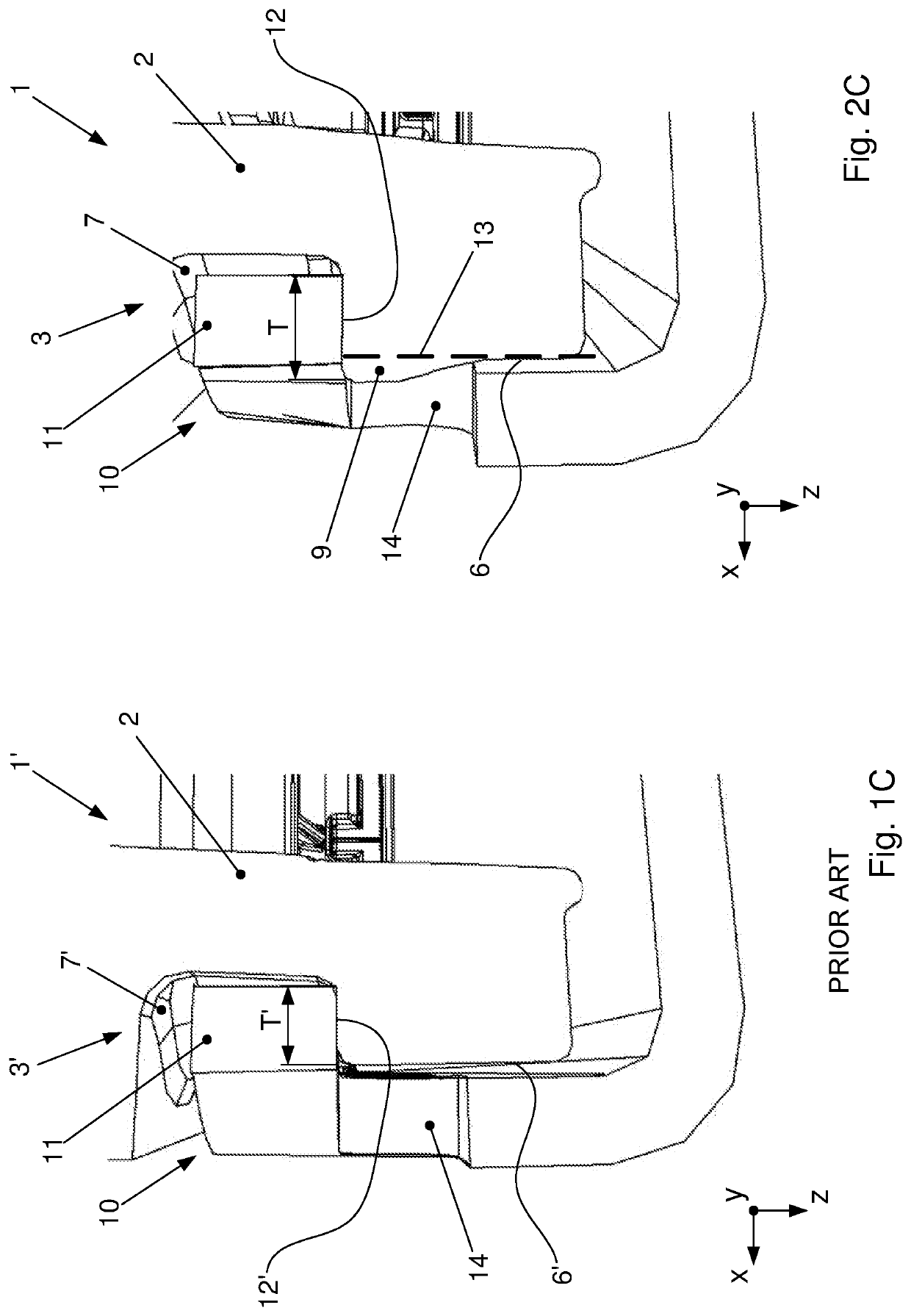System for connecting housing elements of a device for heat transfer
a technology of heat transfer and housing elements, which is applied in the direction of indirect heat exchangers, machines/engines, lighting and heating apparatus, etc., can solve the problems of reducing the utilisation of interior installation space, increasing the risk of undesirable latching connection, and reducing the efficiency of the installation process, so as to achieve maximum resistance to fatigue and destruction of the connection, the effect of reducing the cost of manufacturing and material costs
- Summary
- Abstract
- Description
- Claims
- Application Information
AI Technical Summary
Benefits of technology
Problems solved by technology
Method used
Image
Examples
Embodiment Construction
[0043]In FIGS. 1A and 1B is shown a first housing element 1′ of a device of prior art for heat transfer with a wall 2 and a connection region 3′ in perspective view. FIG. 1B depicts a section of the first housing element 1′ at an enlarged scale.
[0044]The first housing element 1′ is developed to enclose, together with a second, not shown, housing element, a volume. Within the volume a heat transfer arrangement, not shown, can be integrated through which flows a first fluid and around which flows a second fluid. Heat can hereby be exchanged between the fluids. One of the fluids flows herein through a passage inlet 4 developed in the wall 2 into the volume enclosed by the first housing element 1′ and by the second housing element, is routed specifically by the particular wall 2 of the housing element 1′ around the heat transfer arrangement and subsequently flows through a passage, not shown, out of the volume again.
[0045]The first housing element 1′ comprises a connection region 3′ in ...
PUM
| Property | Measurement | Unit |
|---|---|---|
| volume | aaaaa | aaaaa |
| area | aaaaa | aaaaa |
| depth | aaaaa | aaaaa |
Abstract
Description
Claims
Application Information
 Login to View More
Login to View More - R&D
- Intellectual Property
- Life Sciences
- Materials
- Tech Scout
- Unparalleled Data Quality
- Higher Quality Content
- 60% Fewer Hallucinations
Browse by: Latest US Patents, China's latest patents, Technical Efficacy Thesaurus, Application Domain, Technology Topic, Popular Technical Reports.
© 2025 PatSnap. All rights reserved.Legal|Privacy policy|Modern Slavery Act Transparency Statement|Sitemap|About US| Contact US: help@patsnap.com



